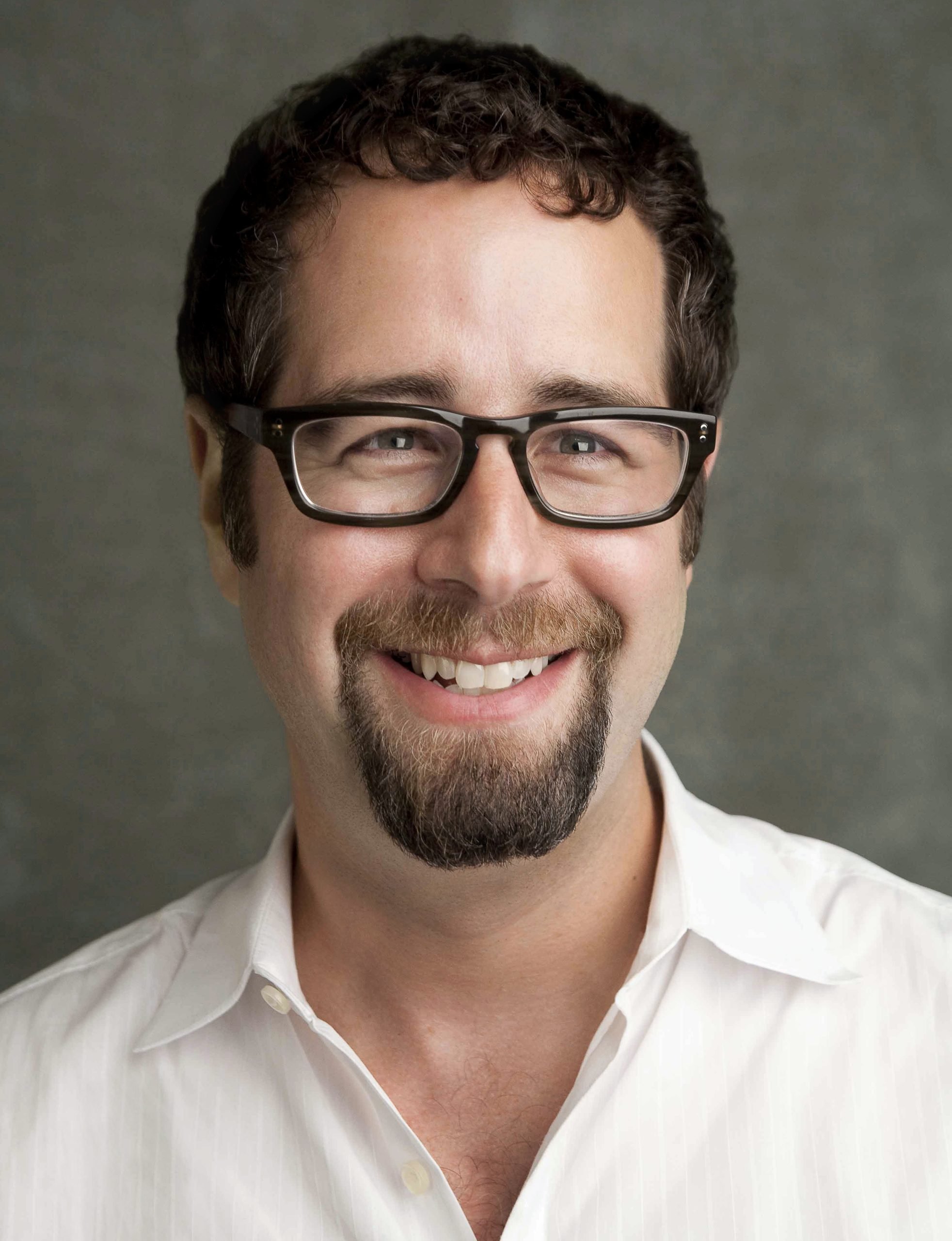Phil Buchanan grew up in Portland, Ore., attending anti-nuclear demonstrations with his father, a professor of philosophy at Portland State University who, as the son puts it, was “a pretty hard-core left-wing activist.”
As a child during the 1970s, the younger Buchanan recalls wearing a poster board protesting the B-1 bomber and hearing stories about his dad getting arrested while laying on the train tracks to protest the nuclear warheads on their way to Washington state.
“My dad drove around in a 1964 Plymouth Valiant with two bumper stickers on it. One said Nuclear Freeze Now and the other said U.S. Out of El Salvador and Nicaragua,” he remembers.
The elder Buchanan didn’t live to see his son study government at Wesleyan University and get an MBA at Harvard. Phil Buchanan went on to join Parthenon Group, a management consulting firm.
When in college, Buchanan often thought his dad would have difficulty with his studies if he were alive. “And then I went off to be a strategy consultant in the corporate world and I thought, Oh boy, now he’d really be cringing,” Buchanan says, only half kidding.
Eventually his skills took Buchanan back to something more in line with his untraditional upbringing’s focus on making the world a better place. In 2001, he became the first chief executive of the Center for Effective Philanthropy, where he remains today. Buchanan is the author of the newly released Giving Done Right: Effective Philanthropy and Making Every Dollar Count, which details the lessons he’s learned in his more than a decade of philanthropic work.
Worth talked to Buchanan about the issues facing philanthropy today—including the controversies over its essential value, why financiers are wrong in their measurements of its effectiveness and the pall that billionaires like the OxyContin-related Sackler family have put over charitable donations.
Q: You make the case that the metrics of the financial world are not the best way to measure nonprofits. What’s wrong with that approach?
A: The biggest and most obvious difference is that ultimately you can gauge investment performance by common metrics. Even when you’re investing in wildly different companies in wildly different industries, you can still look at the returns or the profitability of the companies and compare them. When you’re looking at nonprofit organizations, that’s typically not the case. People try to create common units of measurement, but they’re counterproductive. To gauge the performance of the organization that works on increasing graduation rates against the performance of the organization that works on decreasing CO2 admissions, what’s better? You can’t put them into a common unit.
But there are metrics you can use, right?
Measurement is really important. It’s just way more challenging. And it often has nothing to do with the skills of financial analysis or what you learned in an MBA program. To give you an example, an organization called BELL stands for Building Educated Leaders for Life. They tried to deal with the issue of what’s called summer learning loss for low income kids, which is basically the phenomenon that low income kids backslide during the summer because they’re not studying—and they do so to a much greater degree than affluent kids who are in fancy summer programs and have access to different kinds of resources. BELL does randomized controlled trials to look at a population of kids who’ve been in the program relative to a population that’s identical in terms of key demographic characteristics, and they’re able to see that the outcomes for the kids who go through the program are better than those who don’t. That kind of evaluation has absolutely nothing to do with what you learn in business school or what someone at a hedge fund would know how to do.
How do people in the financial world view nonprofits differently?
There is a mindset that assumes that nonprofits are not well led relative to business and that what’s needed are hard headed investors to hold these sleepy nonprofits’ feet to the fire. But nonprofit leaders are very often some of the most amazing leaders. It takes everything it takes to run an equivalent size business and a ton more because they’re often working on the very toughest challenges: the ones that have defied market solutions.
What are some of the negative results you’ve seen from that attitude?
One is that funders often demand data that would be useful to them but isn’t useful to the nonprofit and is costly for the nonprofit to gather. It’s just like a dance of satisfying different funders with different data needs but not actually answering the important question, which is what does the nonprofit need to do its work better in their view, because they ultimately are the experts.
Are some donors starting to see the light?
One who has is Mario Morino, who helped birth the term venture philanthropy. He created something called Venture Philanthropy Partners. I recently asked him, “Do you still think that venture capital is a good analog for philanthropy?” And he said, “No, I don’t, because the nature of the problems that we’re seeking to address are so much more complicated.” He said, “I was arrogant.”
There is a lot of criticism of philanthropy right now, from people like Anand Giridharadas, who wrote Winners Take All and argues that philanthropy is “fake change” that reinforces an unfair status quo. Is there a connection between what he is saying and your view?
There’s a whole part of his analysis that I absolutely love, which is, let’s stop with the business knows best about everything BS and recognize that Coca-Cola is not going to solve the obesity epidemic and McKinsey is not the Peace Corps. Where he loses me is that sort of broad brush sweeping condemnation of philanthropy in general.
So many of the donors that I know and work with agree that they should be taxed more highly. But they have the wealth that they have, and then they have a decision to make about what are they going to do with it. My hope is that they do give back in a big way. And I would also hope that they focus on issues of inequality and on trying to create opportunity for folks who don’t have enough opportunity.
We can talk about should it even be possible to accumulate that much wealth, but the wealth is there and now what are people going to do? And so I hope they feel pressured to do something positive and to do it effectively.
How important is philanthropy?
Nonprofits employ one in 10 Americans and include everything from Harvard to the local homeless shelter. They’re a vital part of our country. Philanthropy is not their sole revenue source—it’s $400 billion out of $1.7 trillion— but it’s a sizable chunk and we should be working to make it effective, not cynically dissing it all.
Some big donors refer to their philanthropic work as “reputational equity.” Is it reputation laundering? And is there anything wrong with using philanthropy to feel better and improve your image?
That’s a great question. For example, the Sacklers were using their philanthropy in the hope that it would distract from what they were doing, which was from everything I’ve read, criminal and resulted in untold death and suffering. [The Sackler family owns Purdue Pharma, the manufacturer of OxyContin, and is under indictment in several states. It also has donated heavily to major art museums.] I think we should all condemn that. But that’s very different from people feeling a social pressure once they have found themselves wealthy.
Do you think the exposure of the Sacklers and the money they’ve given to museums is a net negative for the world of philanthropy?
It could be to the extent that they’re portrayed as somehow typical or illustrative of some broader trend. But you’re talking about people who are being criminally charged. Most people are not the Sacklers.
I think we go too far when we say that it’s all basically reputation laundering. It’s actually quite dangerous because it can erode our social norms about giving. Ultimately that threatens the organizations and the often vulnerable people that they work with who are dependent on philanthropy.
There does seem to be a lot of social pressure among billionaires to sign the Giving Pledge to donate the majority of their wealth during their lifetimes.
The Giving Pledge is something everybody’s watching and wondering, are these folks really on track to meet the terms of the pledge? In some cases, I think the answer is no. Some people aren’t yet stepping up their giving in the way that they will need to.
What advice would you give to wealthy people who want to make a difference?
People now face a choice, which is to pass along their wealth entirely to their children or buy another yacht, or to actually try to do something that lifts up other people who aren’t related to them and that leaves a positive mark on the world.
People have to come to their own choices about what their goals should be. There’s the sense of obligation many of us feel to give in our local communities on the one hand versus the realization that the same amount of money in a developing country can have a more dramatic impact on a life. Once people get clear on their goals, then I think the key is to have a lot of humility and recognize that it’s important to identify the approaches to achieving those goals for which there is some evidence of effectiveness.
So don’t give just one-year grants that are highly restricted; give flexible funding. Understand the complexity of assessment and try to support the organizations that you’re interested in funding to collect the important information that they need to know. There’s so much good that’s the result of effective philanthropy that we entirely take for granted in this country.
Can you give an example?
The fact that I don’t have to worry about my kid dying of yellow fever because the Rockefeller Foundation and others supported the development of the vaccine. Or the fact that I don’t have to wonder whether people in my family will grow up and be able to marry who they love if they’re the same sex because of the work that the Gill Foundation and a bunch of other funders did on marriage equality. Or just the cultural institutions that we go to and that we take for granted as parts of our community, whether they’re the art museum or the children’s museum or the nonprofit hospital that helped care for someone in our family.


